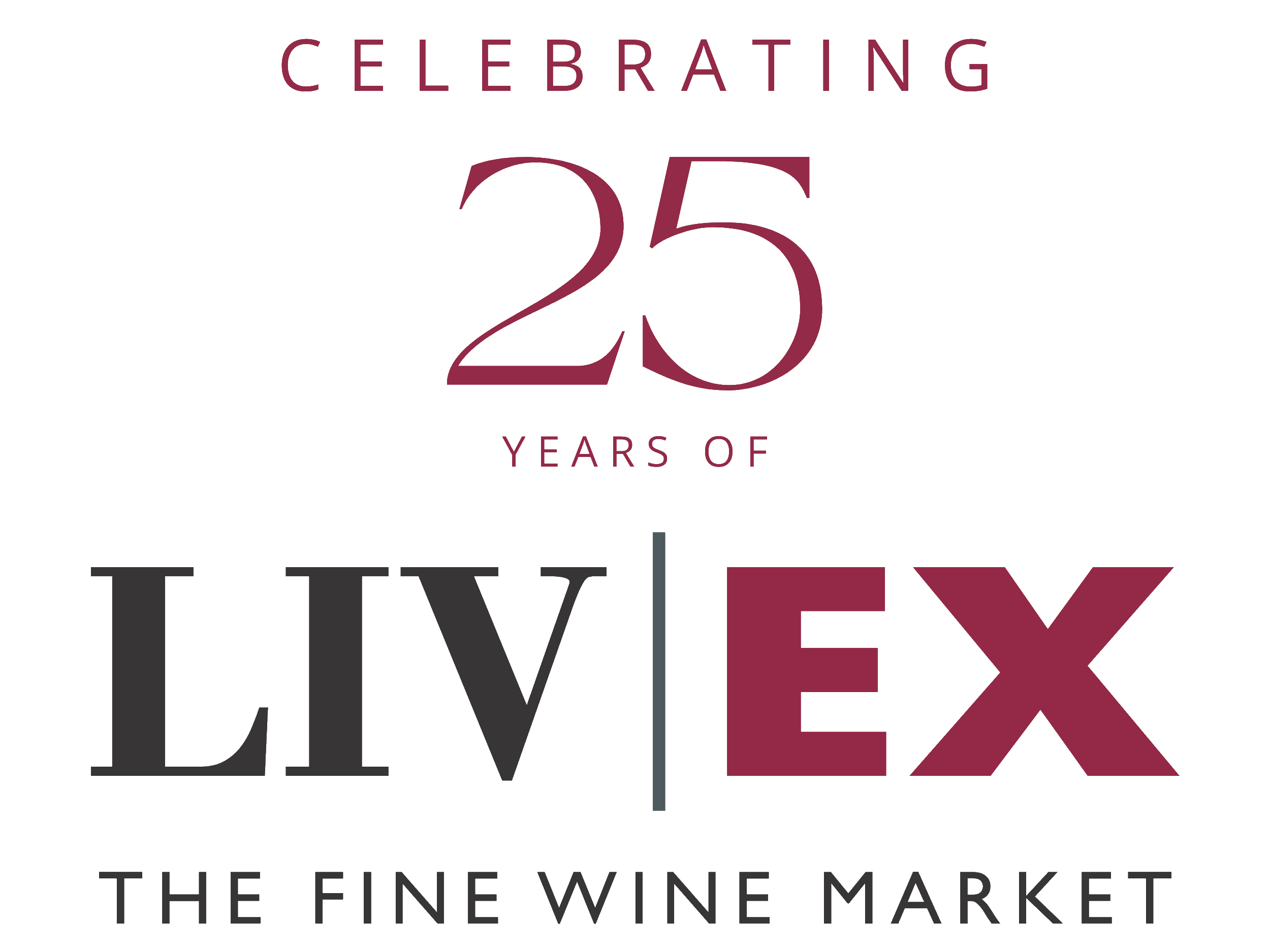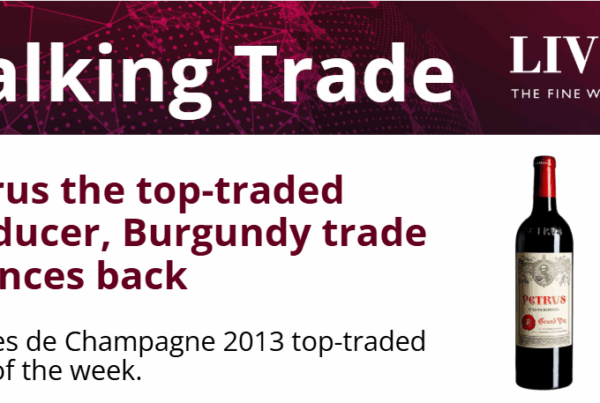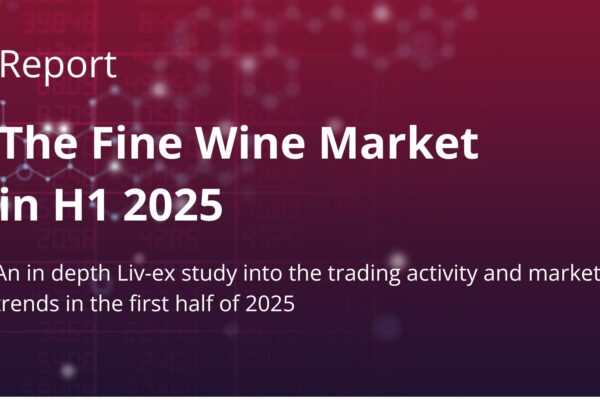Recent trading activity
Bordeaux was in high demand at the beginning of the week, taking just over 50% of the total trade. The recently promoted Premier Grand Cru Classé ‘A’, Château Figeac, was at the centre of activity, together with the First Growth Château Mouton Rothschild. As in recent weeks, top vintages, particularly 2009 and 2019, traded actively.
Burgundy’s market share was 24.9%. Champagne was the third most traded region at 10%, while Italy took only 3.3% of all trade (Tuscany accounted for 0.9%, and Piedmont for 2.2%).
Germany (0.9%) led ‘Rest of the World’ trade, followed by Switzerland (0.4%).
The price premium of 2008 rosé Champagne
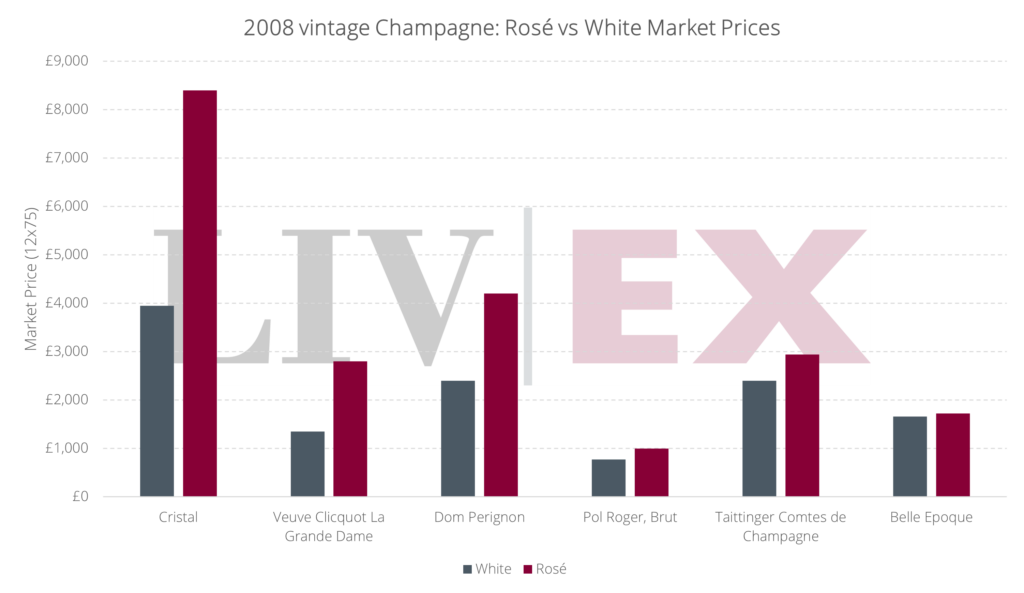
Rosé Champagne is known for being both rarer than white cuvées and more expensive. But how much more expensive can it be?
One of the region’s greatest vintages, the 2008 is also one of the few years when many leading Champagne houses produced both white and rosé vintage Champagnes. This has been reflected in secondary market activity, with 2008 being the most traded vintage across both colours.
On average, 2008 rosé Champagne commands a 96% premium versus white across the six most-traded houses. There is, however, a notable difference in individual premiums between these producers.
The highest premium goes to Louis Roederer Cristal’s 100-point (WA) rosé, which costs 112.7% more than the white. The wine has also been one of the top performers from the Champagne 50 index over the past two years, rising 88.8%.
The most traded rosé Champagne in the past year – Dom Pérignon 2008 – also comes at a premium to its white (75%).
The smallest difference is for Perrier-Jouët Belle Epoque, with its 2008 rosé costing just 3.6% more than the white.

Our recent Champagne report examined the price premium of the 2008 vintage, while our latest Market Report looked at the market for rosé, which tend to cost more than their white counterparts (partly due to lower volumes).
Opportunities to buy Champagne
There are currently over 1,160 LIVE opportunities across Champagne, with over 100 of these for its 2008 vintage.
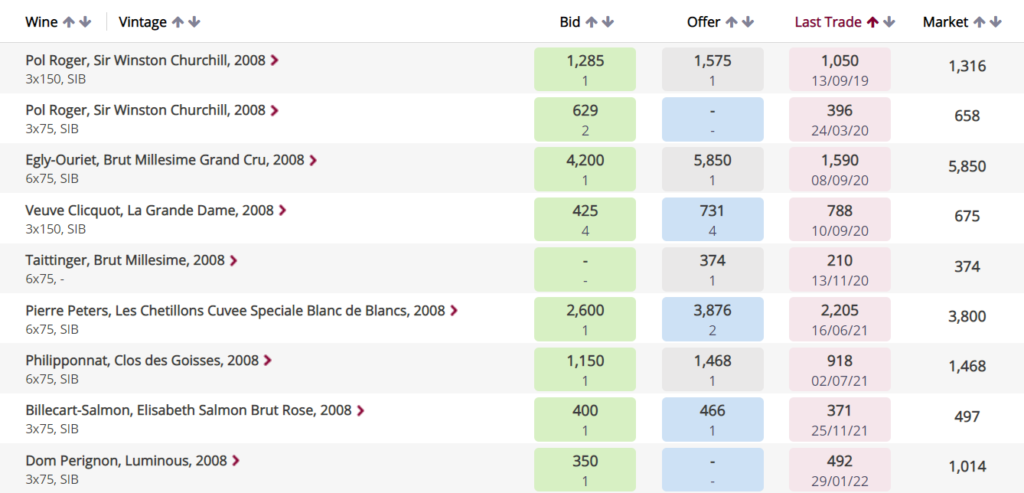
Independent data, direct from the market.
